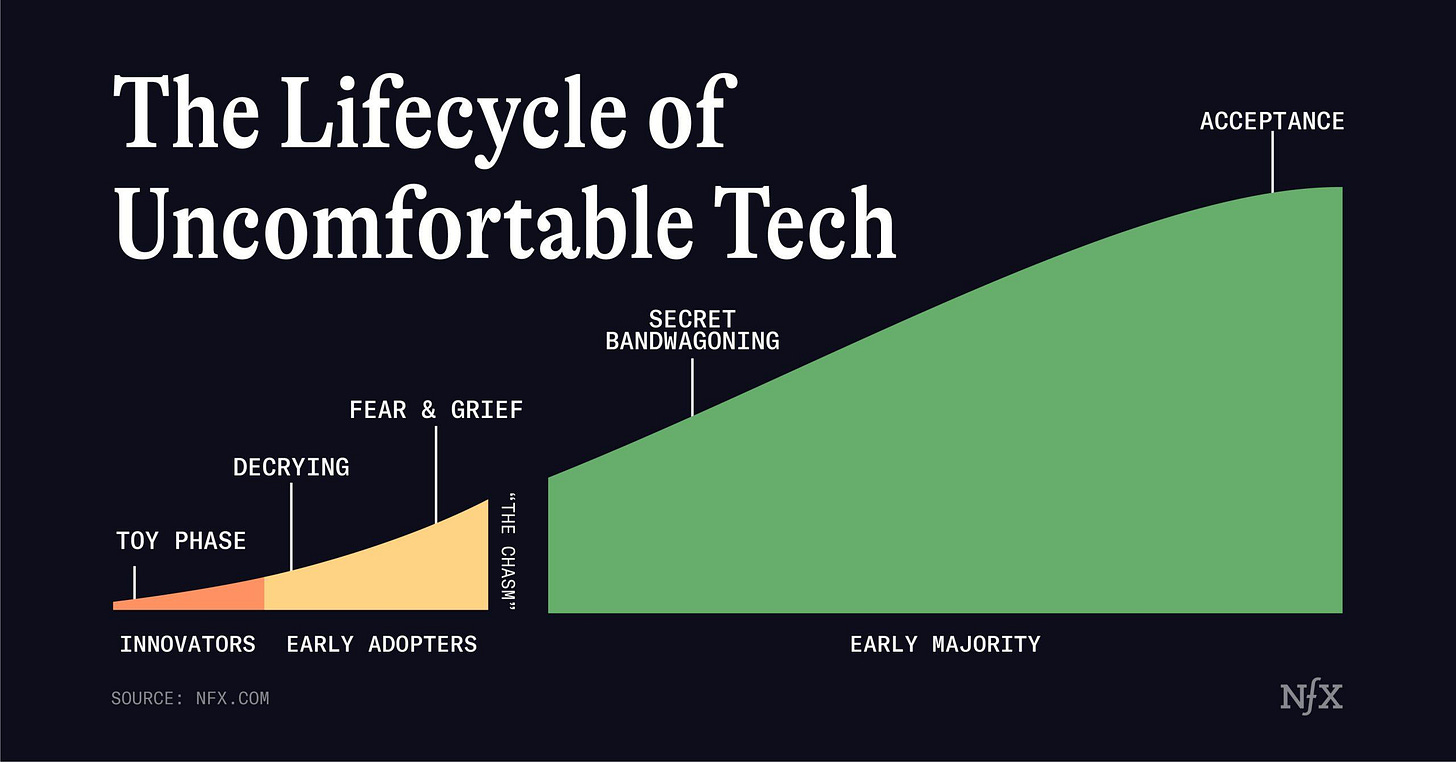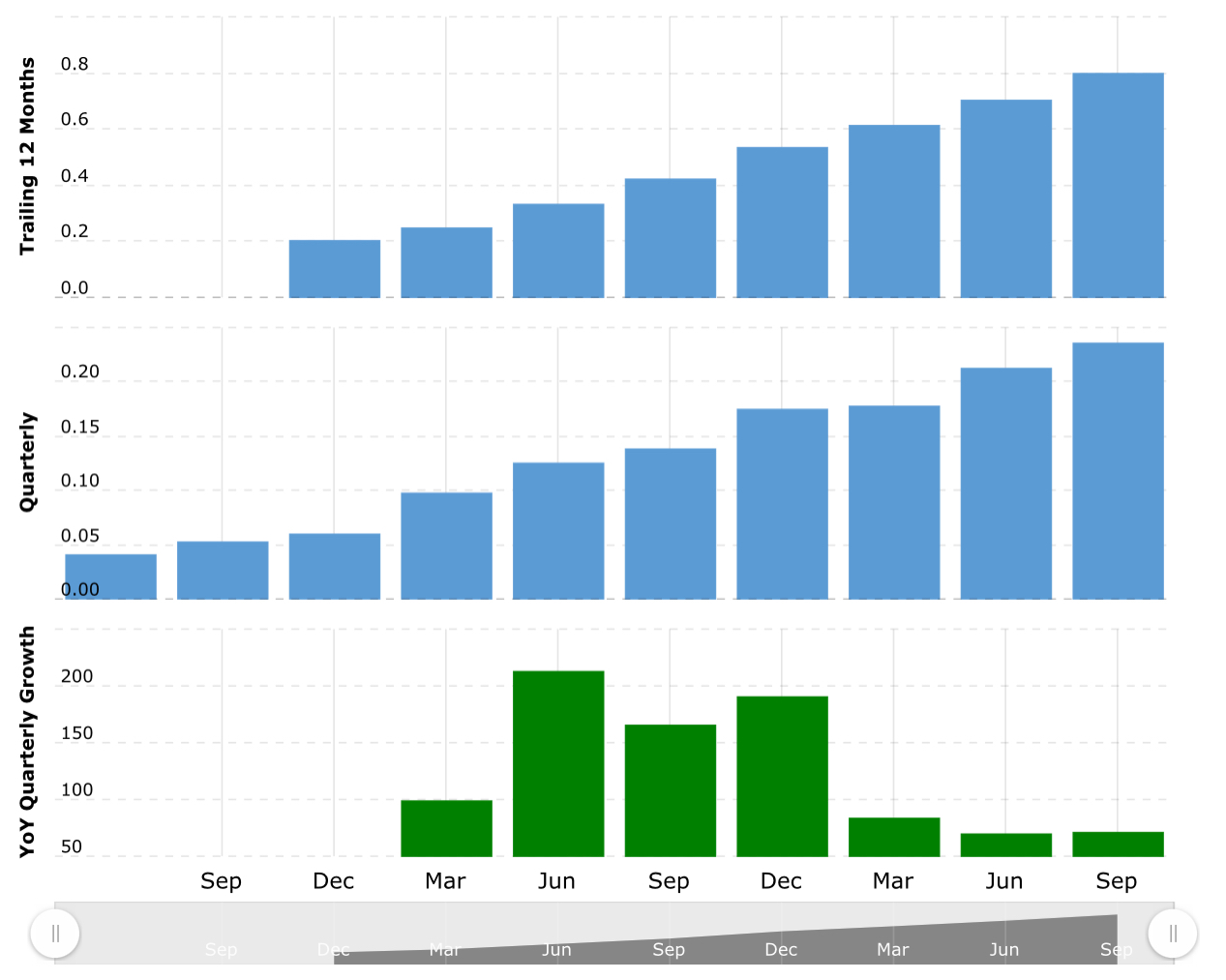Four Horsemen of the Videogame Apocalypse
Prepare for the converging trends that will upend the game industry
I’m heading off to DICE Summit 2023, an annual gathering of the video game industry, and I can’t shake the feeling: too many of these developers I’ll see will soon realize their businesses are obsolete.
This article is an alarm bell, a discussion piece, and a rallying cry: not against the inexorable trends that face us, but how we ought to adapt and grow in response.
Democratization
Democratization means opening an industry to an exponential increase in participants. It was the whole mission of Unity, the creator of the most widely-used 3D Engine used for games (at least until recently—I can’t find the word mentioned on their homepage anymore).
But democratization is also disruptive: when expensive equipment, value networks and expertise are suddenly made accessible to newcomers, it can upend entire industries. Careers may need to take on a new trajectory, and once-valued skills may not longer be in-demand.
With Unity, although the mission was democratization—the target customer always seemed to be a professional game developer or someone who aspired to become one. It was less disruptive because it added tools to an industry that was growing quickly, and where an ongoing production-values arms-race was perpetually underway.
Enter Roblox
We are starting to see something different unfold, and I believe the most important company to look at in game development today is Roblox. It is still a platform that most professional game developers regard as a toy, despite the fact that companies like Gamefam have now shipped what ought to be considered hit games on their platform.
And if not Roblox itself—I believe it will be other technologies that currently appear as toys that will rewrite the rules of game development.
Professionals often regard Roblox as a toy because it mostly used by children, and the production values of Roblox experiences currently lags far behind what one can create with Unity or Unreal. But that will change as Roblox compounds its impressive R&D (nearly a billion dollars in 2022) back into tools that democratize all forms of game and metaverse development.
When I was a kid, one of my inspirations was as a product called Adventure Construction Set.
What was great about it was you could make a game right away, albeit not one you could really give to someone else. Roblox is like that writ large. I needed to learn C and C++ to continue down my path, but Roblox makes it as simple as Lua. It solves for distribution and tooling that supports emergent designs. And the production values will improve—perhaps faster than anyone expects.
Right now, millions of kids are growing up with a dream of becoming a game maker (there are over 250 million people using Roblox each month) and these kids are going to have a much easier time of it than I did.
Whether or not Roblox is the ultimate victor in democratized game development—it represents a vanguard that threatens established business models and hard-earned skills. It is a vanguard led by the next generation, kids who yearn to be creative and want to jump from world to world beside their friends.
In a market undergoing democratization, you may wish to consider joining the democracy, rather than the tyranny it overthrows.
Artificial Intelligence
Generative AI (genAI) is soon going to change many aspects of the graphics pipeline used in game development. Like Roblox, it receives its share of detractors: people who think it is too much of a toy (haha, look at how it makes too many fingers on the hands!) or focus on meta-concerns like intellectual property rights (they’re abusing intellectual property, just as vested interests objected to Roblox or TikTok or YouTube).
The proximal impact of genAI technologies will be the elimination of many jobs that were, up until recently, considered part of the sorcery of game making. This sorcery is going to disappear. And it will affect not only art, but all aspects: code, behavior, servers, music, voice over.
The penultimate impact of genAI will be an overhaul of who is permitted to make commercially-viable games, and the nature of the products themselves.
See the Generative AI Canon for a comprehensive review of the space, and the Five Levels of Generative AI for a focused treatment of progress within gaming.
GenAI will advance the mission of Roblox and other companies who seek to make development more accessible—further accelerating the democratization underway.
The ultimate impact of genAI?
Who can say? Things are moving too fast. But I have conviction that the tinyest teams will be capable of spectacular feats.
The teams that are going to succeed in the next era of game development will take Democratization and Generative AI seriously. They’ll incorporate this tooling into their own pipelines to become hyper-efficient.
They’ll design entire new studios from the ground-up with the right skills.
They’ll launch new games that feature generative and democratized content creation as part of the core-loop of their experiences.
And that leads us to:
Die a Hero, or Live to Become the Platform
The two other horsemen—User Acquisition and Churn—are getting harder and worse, respectively. Game developers have to focus on long-term lifetime values more than ever. And they need to do so to with the utmost capital efficiency.
This is how platforms evolve. In the early days of a platform—such as the iOS App Store—the platform owner is a kingmaker. Content that is featured generates massive wealth overnight. Over time, it gets harder for new content to “break out” as many developers enter the ecosystem. In a late-stage platform, the kings may enjoy a wide moat that protects them from new entrants, while platform owners get to extract high rents.
Enough digital ink has already been spilled decrying the eroding results in markets like mobile advertising. Customer Acquisition is getting harder. Players have more choices, so Churn is also more challenging—and will soon contend with orders of magnitude more content options (jonstokes.comhas a good commentary on this )
We will likely see tools from Unity and Epic become more democratized and more Roblox-like. Entire aspects of the game development pipeline will disappear, as geometry optimizations and light baking may eventually vanish due to Nanite and Lumen in Unreal 5. Generative AI will automate other aspect. And in the case of Epic, you can expect that Fortnite Creator mode will become more central as time passes.
But games can also be “platforms.” Being a platform simply means being a place your customers can become creative inside—and earn far more from their creativity than the platform takes away.
What is earned may be financial, social or psychological. The latter is especially important, because games are naturally intrinsic-rewarders, not extrinsic-payers.
This means that we all need to get better at making games that are social and creative hubs.
For the teams that don’t want their game to “become the platform” — think about your community and your brand as the platform. It is a way out of the vicious cycle of depending solely on advertising.
“Your Bloated Budget is Opportunity”
Jeff Bezos famously commented about how businesses with high margins were his target.
For games, the target will be large-budget games built by a new generation of hungry, lean and ambitious teams. They will have more opportunities to execute than ever before.
Yes, there will be exceptions. In video games, there are always the exceptions. But I wouldn’t let these examples of survivorship bias guide your strategy.
It is time to carefully revisit every aspect of the games business: the games that are made, the audience it serves, the technologies it uses and the processes used to make products.
The future of games is at stake—or at the very least, your future is at stake.




